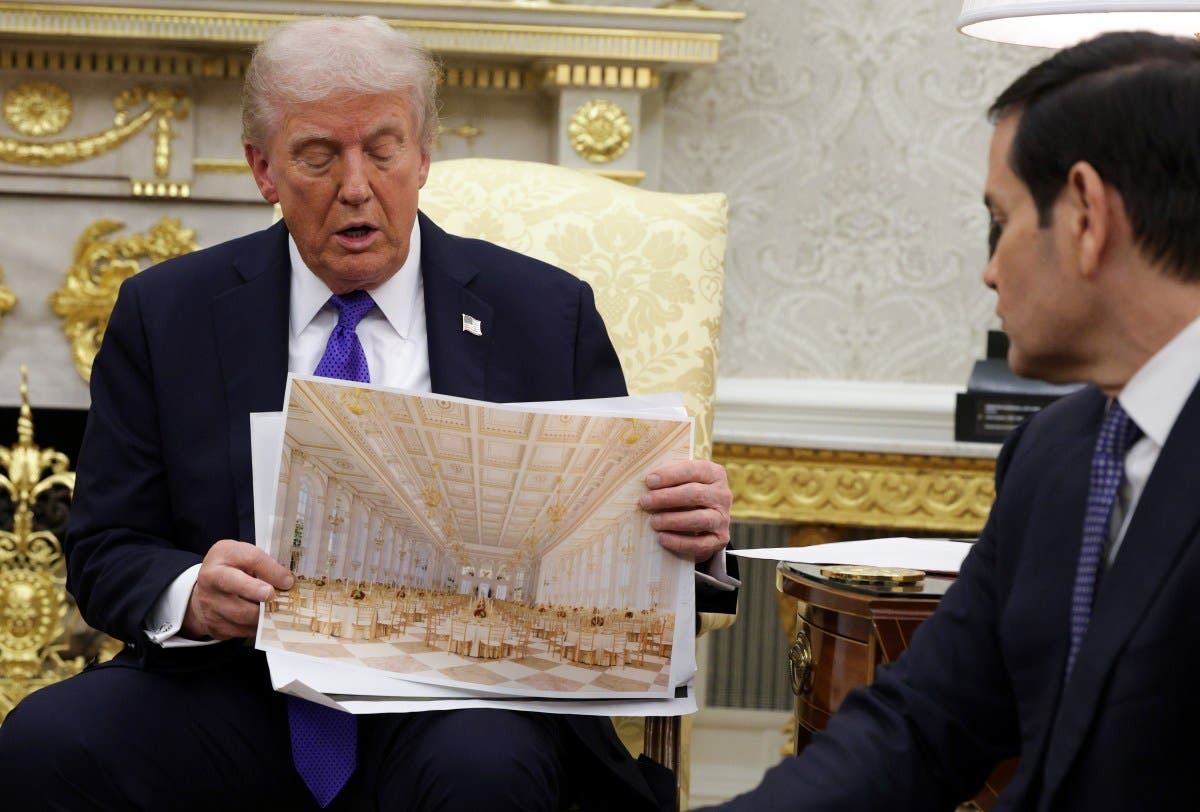President Donald Trump has rejected claims that he intends to name the new White House ballroom after himself, labeling such reports as “fake news.” The denial follows a statement from White House spokesperson Davis Ingle, who indicated that any official announcement regarding the ballroom’s name would come directly from Trump, rather than through anonymous sources.
The controversy arises amidst the ongoing demolition of the East Wing of the White House, which previously housed the first lady’s offices. This project aims to create a new state ballroom with a capacity of up to 650 seated guests. Critics, including Senate Minority Leader Chuck Schumer, have accused Trump of pursuing what they term a “vanity project,” while the President argues that the East Wing was “ready to be replaced.” He noted that a new hosting venue at the White House has been desired for “at least 150 years,” asserting that the East Wing has undergone significant alterations since its original construction.
Initial estimates placed the cost of the new ballroom at $200 million, but this figure has since risen to over $300 million, with Trump claiming that the funding will come from private donors. The National Trust for Historic Preservation has urged the Trump administration to halt the demolition until a thorough planning commission review is completed, expressing concerns that the new ballroom could “overwhelm the White House itself,” which spans 55,000 square feet.
Details of the Construction and Controversy
Reports from ABC News indicated that officials involved in the ballroom project had begun referring to the structure as “The President Donald J. Trump Ballroom.” However, Trump clarified to reporters that while he had considered naming the venue the Presidential Ballroom “or something like that,” no decision had been finalized.
In a recent statement, Trump revealed that the budget for the project could potentially increase again, as the White House currently allocates around $350 million for the initiative. Additionally, he suggested that any financial compensation received from the Department of Justice concerning investigations into alleged links between his 2016 campaign and the Russian government might be donated to the ballroom project.
The East Wing, which was first constructed in 1902 and expanded in 1942, has faced significant backlash regarding its demolition. Many Americans, including historians and lawmakers, have voiced their disapproval of the destruction without public consultation.
The White House shared archival images of past renovations with the caption, “Hi, haters,” further fueling public discourse on the matter.
Public Reactions and Political Responses
In a recent post on Truth Social, Trump expressed his satisfaction with the groundbreaking of the new ballroom, stating, “I am honored to be the first President to finally get this much-needed project underway — with zero cost to the American Taxpayer!” He emphasized that the ballroom would be funded by private donations from “generous Patriots” and corporations.
White House Press Secretary Karoline Leavitt addressed concerns regarding the demolition, asserting that legal opinions indicate that a submission for the current structure’s demolition is not required. She noted that only vertical construction would necessitate such a submission.
Critics have continued to voice their concerns. Carol Quillen, president and CEO of the National Trust for Historic Preservation, acknowledged the need for a larger meeting space, but stated that the proposed construction’s size “will overwhelm the White House itself” and disrupt its classical design.
Political figures, including Senator Elizabeth Warren and California Governor Gavin Newsom, have also taken to social media to criticize the project. Warren remarked on the apparent disconnect between rising living costs and the ongoing demolition, while Newsom’s office referred to the proposed ballroom in a derogatory manner, suggesting it would serve as a “monument to Donny’s shortcomings.”
As construction progresses, public and political reactions to the new White House ballroom will continue to evolve. However, a precise completion date for the project has not yet been announced.






